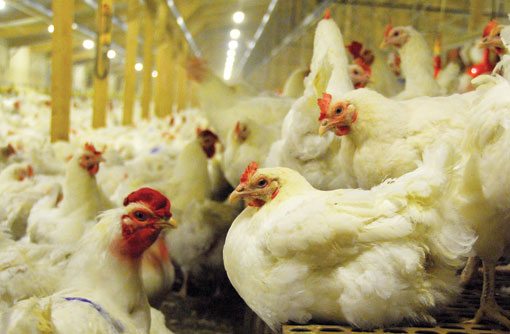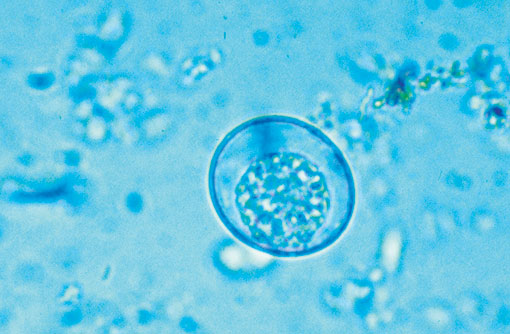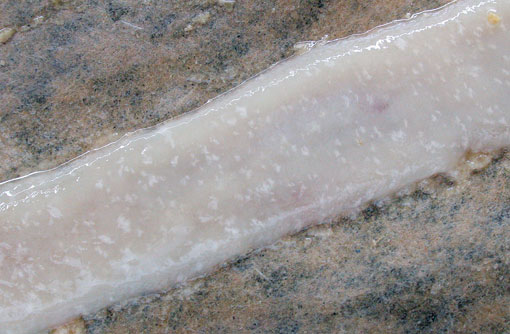Experts give their views on coccidiosis

As part of a new series looking at poultry health issues, we invite a panel of experts to answer the essential questions about a range of diseases and health threats, kicking off with coccidiosis
Meet the experts:
|
|---|
1. What is coccidiosis?
TJ: Coccidiosis is a disease caused by infection with one or more species of protozoan parasites (coccidia) of the genus Eimeria. When multiplying in the intestine, the coccidia cause tissue damage resulting in poor nutrient absorption, which in turn results in reduced weight gain and reduced feed efficiency.
JMR: There are several species of coccidia able to infect chicken, and each species has its own characteristics. The best-known coccidiosis is caused by Eimeria tenella, as it is very showy, causing blood in droppings and death. But we must keep in mind inconspicuous coccidioses – like those caused by Eimeria acervulina or Eimeria maxima – that may have more adverse effects on growth and profitability.
2. Why is it important in modern poultry production?
TJ: Coccidia are ubiquitous in modern poultry production facilities and coccidial oocysts are easily transmitted among birds through oocyst ingestion from the litter. Therefore, there is a constant threat from coccidiosis and the resulting damage that infection produces in the intestine of the bird.
JMR: Clinical or subclinical coccidioses induce economic losses. This aspect is the most important, but animal welfare is also involved in clinical cases, with associated gut disorders, litter deterioration and foot pad dermatitis. Coccidia are very common in broiler farms: they multiply rapidly and bird density enhances this phenomenon.
3. What issues does it cause for chickens and for poultry managers?
TJ: Depending upon the severity of infection, coccidiosis results in reductions in weight gain and feed conversion efficiency of the host; in severe infections, morbidity and mortality can result. The overall effect is a reduction in growth performance and reduced profitability. An additional issue is the fact that a coccidial infection can also lead to the development of bacterial enteritis.
JMR: The clinical signs depend on the level of infection, but also on the species of coccidia. E. acervulina has an impact on growth and FCR, but a slender effect on health. E. tenella, which only develops in the ceca, may have a marked impact on health, but not on FCR as the ceca play only a minor role in digestion. For poultry managers, the main issues are litter alteration due to diarrhoea, growth heterogeneity and economic losses.
4. When is the peak challenge of coccidiosis?
TJ: This differs for the three most important species of Eimeria in broilers. While the peak challenge of E. acervulina oocysts generally occurs when the birds are in the fourth week of age, peak challenges of E. maxima and E. tenella oocysts tend to occur later. However, the most important consideration in effectively controlling coccidiosis is to recognise that a challenge of coccidial oocysts exists in every broiler facility throughout the life of the bird.
JMR: Parasites must multiply in order to reach the amount required to cause the disease. A parasite life-cycle lasts approximately one week. Each week, a new generation of oocysts appears, and pressure grows in waves. The risk period is most likely the fourth week of age for E.acervulina, which has a short life cycle, and the fifth week for E. tenella and E. maxima. However, coccidiosis can appear during the second week or only a few days before slaughter. Poor management or the appearance of other pathogens can increase the risk.
5. What is the best way to diagnose coccidiosis?
TJ: The best way is through routine post-mortem examination of the characteristic lesions due to coccidial infection, using the method devised by Johnson and Reid in 1970. Contrarily, oocyst counting and histopathology are not good ways to diagnose coccidiosis, because oocysts can be found in microscopic examination of the intestine of essentially every broiler chicken, even in the absence of intestinal damage.
JMR: Diagnosis must be based on suspicion. A problem must be suspected in the flock, like growth reduction and bird size heterogeneity. The only way to diagnose correctly is to quantify the gut lesions in birds representative of the status of the flock. If there are lesions, the species of coccidia involved can be identified, and the severity of infection can be measured. Furthermore, the lesions remain for a few days, and they depend directly on the infection dose.

6. What is the difference between coccidiosis and coccidiasis?
TJ: Coccidiosis is defined as a coccidial infection that has some adverse effects on the host. Coccidiasis is a term coined by Levine (1961) to describe a mild coccidial infection that has no adverse effects on the host.
JMR Coccidiosis is characterised by clinical signs: chilliness, apathy, diarrhoea – sometimes bloody – and death. This form occurs when the amount of coccidia is high and when destruction in the gut is huge. Coccidiasis is a synonym for sub-clinical coccidiosis: no sign, no sick birds, but growth depression and increased FCR. This is the most frequent occurrence and, most of the time, it will not be diagnosed.
7. How do I control coccidiosis on a poultry farm?
TJ: The best way is through continuous use of effective anticoccidial chemotherapy, administered in the ration. Today the most effective programmes include an ionophore, a class of anticoccidial drug that has remained effective in the control of coccidiosis after more than 40 years of continuous use. Unlike many anticoccidial drugs, it has not lost its effectiveness due to the development of anti-coccidial drug resistance.
JMR: The respect of good practices – cleaning, starting temperature, litter quality, air renewal – is obviously essential. But focused control strategies should also be applied. The two recognised efficient approaches are vaccination and the use of in-feed anticoccidial additives (coccidiostats). Vaccination is the most efficient, but it is expensive, and the vaccine needs to recycle. Furthermore, treatment with anticoccidial activity is prohibited during the first four weeks of life. Coccidiostats are more affordable and have real demonstrated efficacy, but they might face the appearance of drug-resistant populations of coccidia.
8. Are vaccines the better option in broilers and breeders, or should we be looking for alternatives?
TJ: Coccidiosis vaccines may be a good option for broiler breeders, but may not be the best option for broilers, the reason being that in order to achieve protective immunity, the bird must undergo repeated infections with coccidia. Due to the genetic progress, the lifetime of broilers to reach market weight is becoming too short to allow protective immunity to develop.
JMR: Vaccines are the best option if one can afford it. Coccidiostats are an alternative, but must be monitored for signs of resistance. Disinfectants are not an alternative, in my opinion, as a very small number of oocysts can initiate an infection, and disinfectants never destroy all the remaining oocysts of a previous flock. Furthermore, oocysts might come from outside.
 |
|---|
| Lesions of the upper gut are a classic symptom of damage linked to |
9. Up to what age should broilers be protected against coccidiosis? How and when does immunity develop?
TJ: Broilers should be protected against coccidiosis right up until the time they are transported to the processing plant. This is because the farmer already has a heavy investment in his broilers and not all of them will have developed protective immunity to coccidiosis. Therefore, a coccidiosis break prior to processing can be very costly. This recommended practice is possible as anticoccidial chemotherapy has a zero withdrawal regulatory approval.
JMR: Coccidiosis can occur at any age, thus protection should be continuous. Also, there is no cross protection against the different species of coccidia. As there are seven Eimeria species infecting chickens, birds having experienced an infection with one species will develop protective immunity against this species, but will remain sensitive to the six other ones.
10. Will we ever eliminate coccidiosis in broiler production?
TJ: The short answer is no. No anticoccidial drug or vaccine has been able to completely eliminate coccidial reproduction and no litter treatments have been able to completely destroy coccidial oocysts. Since coccidiosis vaccines all contain live coccidial oocysts, their use actually adds to the oocyst numbers in the litter of the poultry facility.
JMR: This is a worthwhile hope, and I think it is possible. In order to reach such an objective, we must control (if not eradicate) coccidia in order to prevent coccidiosis or coccidiasis. We have to accept to grow chickens with coccidia, but with a balance beneficial for the chickens.


